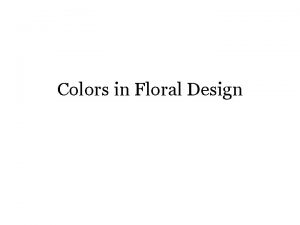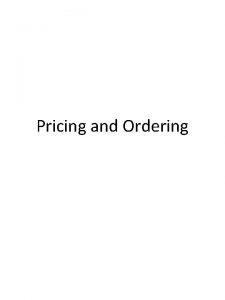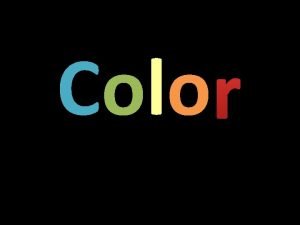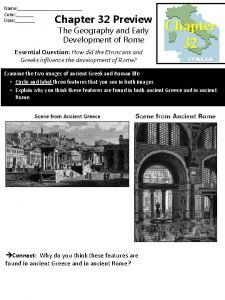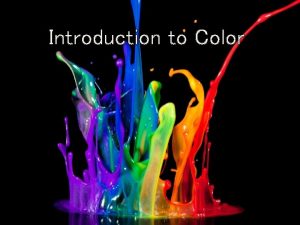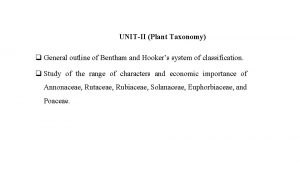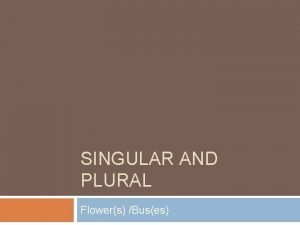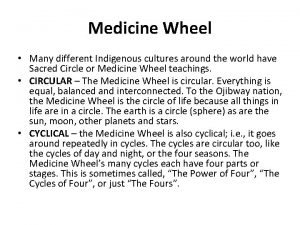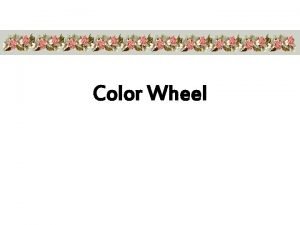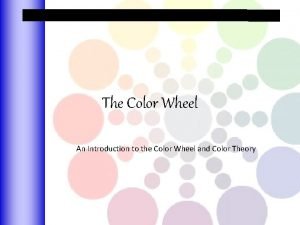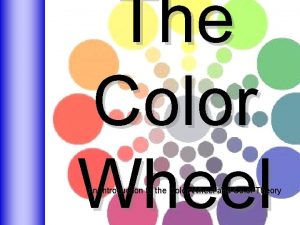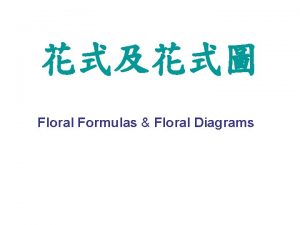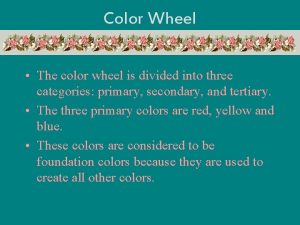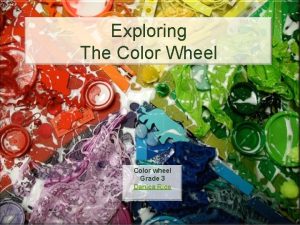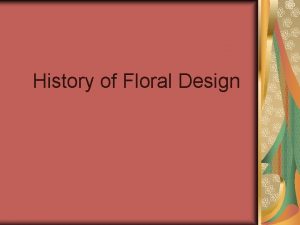Colors in Floral Design Color Wheel A color



















- Slides: 19

Colors in Floral Design

Color Wheel • A color wheel (also referred to as a color circle) is a visual representation of colors arranged according to their chromatic relationship.


Primary Colors • Red, Yellow, Blue • Called foundation colors since all other colors are created from these three

Secondary Colors • Orange, Green, Violet • A mixture of two adjacent primary colors

Tertiary Colors • Have hyphenated names • Created by mixing adjacent primary & secondary colors

Hue • Hue identifies a color by name. Every color falls into a definite hue category as indicated by the spectrum color name on the color wheel.

Warm Hue • Warm, or advancing colors, are those that resemble fire and heat. Red, red-violet, redorange, and yellow-orange are examples of warm colors. • Warm colors appear closer and are more eye catching than cool colors.

Cool Hues • Cool, or receding colors, are associated with peace and calm. Blue, blue-green, and blueviolets represent cool colors. • Cool colors in a composition tend to visually recede and look smaller. They are not easily seen from a distance.

Value • Value is the lightness or darkness of a hue achieved by adding white, gray, or black. • White added to a hue creates a tint. • Gray added to a hue creates a tone. • Black added to a hue creates a shade.

Chroma • Chroma refers to the degree of intensity, strength, saturation, or purity of a color. Purity of a color refers to its freedom from white, black, or gray.

Emotional Responses to Color • Colors create an emotional response that is different for each person. The study of how individuals react to color is called the psychology of color. This reaction can usually be traced to one’s educational background, personality, and geographical location.

Color Responses • Yellow – happy, cheerful, bright, symbolic of friendship and the spring season. • Red – stimulating, exciting, warm, joyful, expresses love. • Blue – quiet, cool and retiring, dignity and formality. • Orange – warmth, autumn color, pumpkins and Halloween. • Green – restful, symbolic of living things and St. Patrick’s Day. • Violet – restful, denotes royalty and elegance. • Black – somberness, death, Halloween, dramatic effect. • White – purity and innocence, weddings, snow.

Color Harmonies • Combinations of colors that are pleasing to the eye. The designer creates these by grouping different hues or combining tints, tones, and shades of a single hue.

Monochromatic • Color scheme consists of a single hue and its variations in tint, tone, and shade.

Analogous • Achieved by using three or more hues which occur next to each other on the color wheel.

Complementary • Combination of any two colors opposite each other on the color wheel.

Split-Complementary • Uses any color with the two colors on each side of its complement.

Triad • Created by using any three colors that are equally spaced on the color wheel.
 What is this color called
What is this color called Floral pricing worksheet answer key
Floral pricing worksheet answer key Creative color wheel
Creative color wheel 3-5 colors next to each other on the color wheel
3-5 colors next to each other on the color wheel Square color scheme
Square color scheme Color wheel
Color wheel On newton's color wheel colors that lie directly
On newton's color wheel colors that lie directly Analogous colors are ____ each other on the color wheel.
Analogous colors are ____ each other on the color wheel. What are the primary colors and secondary colors
What are the primary colors and secondary colors Metadata and taxonomy
Metadata and taxonomy Flower plural or singular
Flower plural or singular Colours of medicine wheel
Colours of medicine wheel Medicine wheel colors
Medicine wheel colors Color wheel light
Color wheel light Color red meaning
Color red meaning Primary secondary tertiary colors
Primary secondary tertiary colors Tire wheel and wheel bearing fundamentals
Tire wheel and wheel bearing fundamentals Tire wheel and wheel bearing fundamentals
Tire wheel and wheel bearing fundamentals Give two parts of the sewing machine under the bed
Give two parts of the sewing machine under the bed Ffa emblem cut out
Ffa emblem cut out
